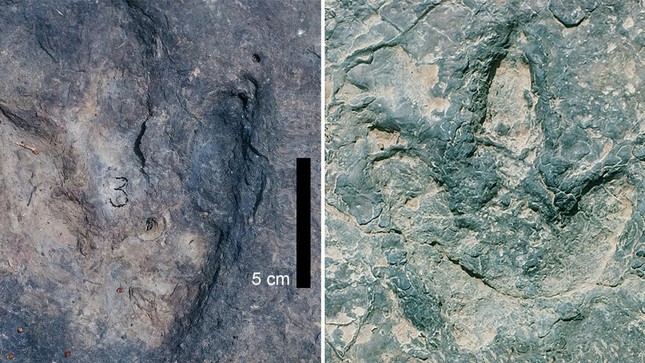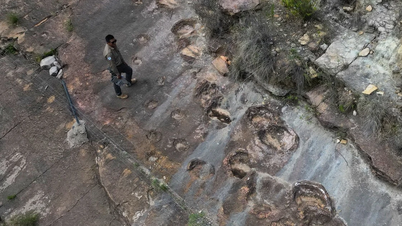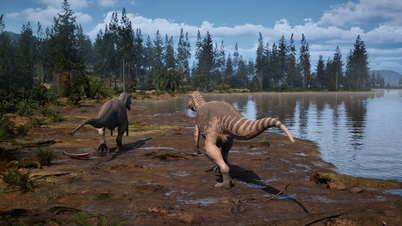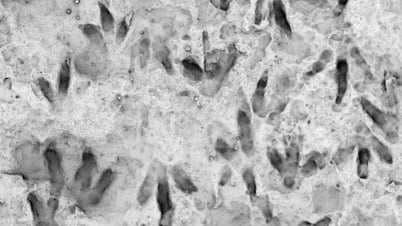TPO - According to new research, matching footprints discovered in Africa and South America suggest that dinosaurs once traveled along a long route 120 million years ago before the two continents separated.
 |
The footprints of theropod dinosaurs have been found in the Sousa Basin in northeastern Brazil. (Photo: Ismar de Souza Carvalho) |
Paleontologists have found more than 260 dinosaur footprints from the early Cretaceous period in Brazil and Cameroon, now more than 6,000 km apart on opposite sides of the Atlantic Ocean.
Louis L. Jacobs, a paleontologist at Southern Methodist University in Texas, USA, and the lead author of a study recently published by the New Mexico Museum of Natural History and Science , said that these footprints are of similar age, shape, and geological context.
Most of the fossil footprints were made by three-toed theropod dinosaurs, while a few may be from slow-moving, four-legged sauropods with long necks and tails or ornithischia, which had a bird-like pelvic structure, study co-author Diana P.
The trail tells the story of how the movement of massive landmasses created ideal conditions for dinosaurs before the supercontinents split into the seven continents we know today.
Footprints in the mud and silt
Jacobs said these footprints were preserved in mud and silt along ancient rivers and lakes that once existed on the supercontinent Gondwana, which separated from the larger landmass.
Africa and South America began separating approximately 140 million years ago. This separation created fissures in the Earth's crust, and as the tectonic plates beneath South America and Africa drifted away, magma in the Earth's mantle created new oceanic crust. Over time, the South Atlantic filled the space between the two continents.
In both basins, researchers found dinosaur tracks, ancient river and lake sediments, and fossilized pollen. The muddy sediments left by the rivers and lakes contain dinosaur footprints, including those of carnivorous animals, demonstrating that these river valleys may have provided specific pathways for life to move across continents 120 million years ago.
Footprints that tell stories
While dinosaur fossils can provide unique insights into the animals that once roamed this planet millions of years ago, their footprints offer other perspectives on the past.
Jacobs said: "Dinosaur footprints are evidence of dinosaur behavior, how they walked, ran, who they were with, what environment they passed through, in what direction they went, and where they were when they did so."
It's difficult to pinpoint which specific dinosaur species migrated along the Atlantic basin, but they represent a broader picture of ancient climates and how different animal species thrived in the environment created by continental divergence.
Jacobs befriended the study's author, Ismar de Souza Carvalho, now a professor of geology at the Federal University of Rio de Janeiro. Jacobs was researching dinosaur movements from the African side, while Carvalho was studying them from the Brazilian side.
As research into basins in Africa and South America continued in the following decades, Jacobs and Carvalho and their colleagues examined existing and new field data to analyze relevant aspects. The new research was published in memory of Lockley, who dedicated his career to studying dinosaur footprints.
Jacobs said, "We want to combine new and developing geological and paleontological evidence to tell a more specific story about where, why, and when the dispersal of the continents occurred."
According to CNN
Source: https://tienphong.vn/tim-thay-nhung-dau-chan-khung-long-giong-nhau-o-hai-ben-bo-dai-tay-duong-post1667812.tpo






































































































Comment (0)